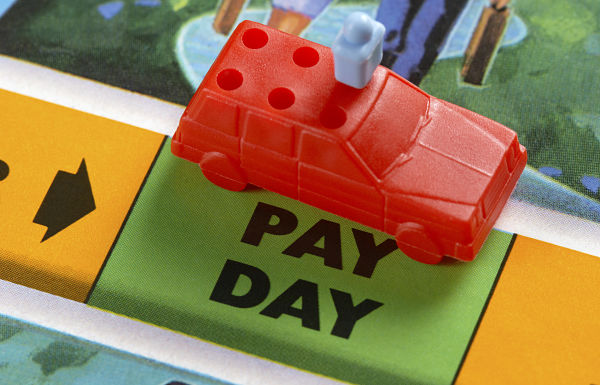Professorial Research Fellow and Deputy Director (Research), HILDA Survey, Melbourne Institute of Applied Economic and Social Research, University of Melbourne
Small, incremental changes to the minimum wage are unlikely to have a big impact on employment. But Australia’s employment situation is deceptively weak and what would be better for the economy and low income earners is to do away with their personal income tax.
The latest 2.4% increase in the federal minimum wage announced by the Fair Work Commission wasn’t surprising and correspondingly met with little reaction. The increase amounted to slightly more than 1% after taking out the effects of inflation, and was regarded by many as a moderate and measured adjustment.
This is the latest in a pattern of small annual increases that has applied over most of the history of the federal minimum wage since its introduction in 1997, especially in recent years, with the latest increase following on from a 2.5% increase in 2015, a 3% increase in 2014 and a 2.6% increase in 2013.
Taking a somewhat longer-term view, there are reasons to be concerned about this pattern of minimum wage increases. In particular, their cumulative effect is not trivial: since 1997, the minimum wage has risen by 87%, compared with a 62% increase in prices. This translates to a 15% increase in the real value of the minimum wage; since 2011, the real value of the minimum wage has increased by approximately 4.5%.
In a strongly growing economy, these relatively small increases might not matter too much. But Australia’s economy is not growing strongly.
Real net national income per capita has been falling since 2011 (by over 6% in total), and wage growth in the economy as a whole has been correspondingly low in the last few years. More importantly, it is unlikely that the wage of low-wage workers, as determined by the market, is rising in this broader economic context. It seems highly plausible that the minimum wage is having more “bite” – that is, increasingly constraining the employment of low-skilled workers.
Australia’s minimum wage also remains very high by international standards. OECD data shows that Australia has the third-highest minimum wage in the OECD (at purchasing power parity), after Germany (which introduced a national minimum in 2015) and Luxemborg.
This comparison is even more striking considering that many low-skilled workers – for example, in retailing and hospitality – are covered by awards that specify rates of pay higher than the national minimum, particularly when penalty rates are taken into account.
For example, the minimum full-time adult weekly wage for a Retail Level 1 Employee is (before the 1 July increase) $721.50, which is $64.60 higher than the federal minimum wage. Penalty rates for night-time and weekend work and casual loadings further increase the effective minimum wage for many types of work. These minimums will also all increase by 2.4% on 1 July.
Apparently at odds with negative employment effects is that the unemployment rate is currently at 5.7%, which is not high by modern historical standards. However, the current employment situation in Australia is deceptively weak.
Perhaps most notable is the low level of full-time employment. ABS data allows us to examine the proportion of the population aged 15 and over that is employed full-time back to 1966. The data show that the current rate, below 42%, is the lowest it has been, despite the growth in female employment participation that has occurred over this period.
Consistent with this decline, the number of people who are working part-time but wanting to work more hours (and in many cases seeking full-time employment) – that is, underemployed – is at a record high. Since mid-2014, approximately 8.5% of the labour force has been underemployed. And participation in the work force is also considerably below its 2008 peak, a decline that is only partially explained by the movement of baby boomers into retirement. While many factors contribute to these weak employment outcomes, the role of the minimum wage should not be dismissed as unimportant.
Minimum wages enjoy widespread support in the community, and it is legitimate for a society to decide to trade off employment for higher minimum wages of the employed. For example, Australia may prefer lower employment in exchange for a minimum wage that provides for a “decent” living standard when employed full-time at that minimum.
But we should not accept this trade-off when we have not exhausted other means of improving the living standards of low-wage workers. And we have not: a single full-time minimum wage worker (without children) pays approximately $3,500 in income tax (including the Medicare Levy) annually. Other full-time minimum-wage workers are also paying significant amounts of income tax.
We could both increase the living standards of low-wage workers and increase the employment of low-skilled workers with a combination of reducing the minimum wage and eliminating income tax for minimum-wage workers. This would be a much more effective anti-poverty strategy.
Why does this disconnect between the wage system and the income tax system exist? Obviously this is not a question for the Fair Work Commission, which has no power to influence income taxes, but it is a question we should be asking our politicians during this election.
I suspect some in government like minimum wages because it is a method for increasing the incomes of low-wage workers at no direct cost to the government budget; instead, the cost is borne by employers. Unfortunately, the cost is also borne by the people excluded from jobs by these minimums.
This story first appeared in The Conversation.

